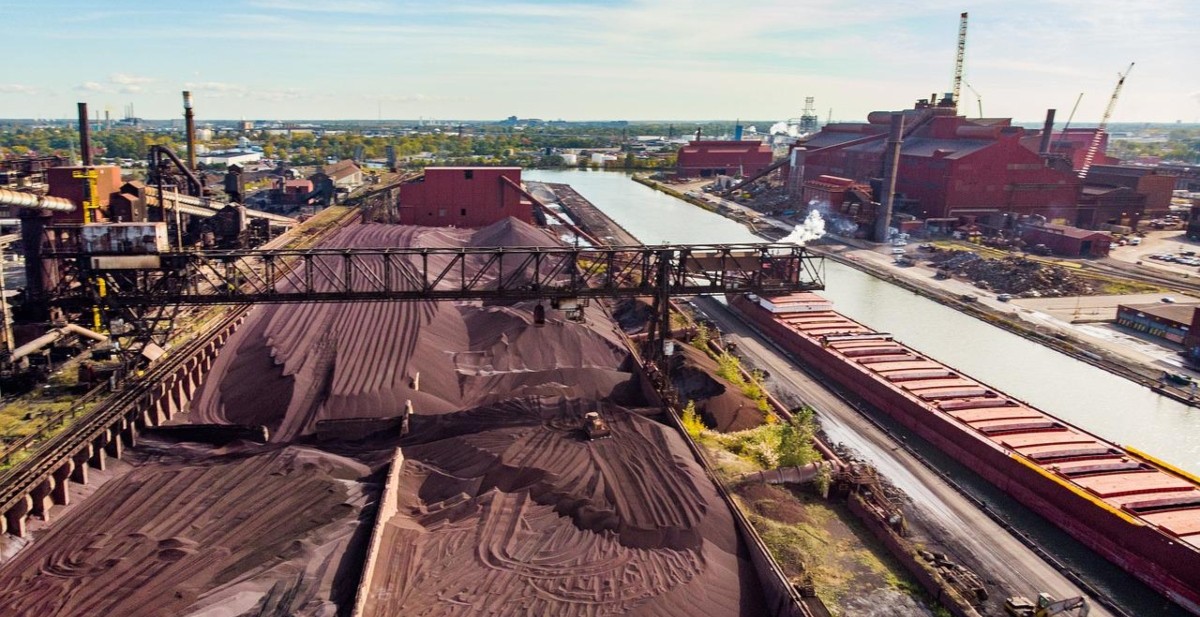Iron ore stuck in downward spiral

IChina needs to deliver on stimulus promises to bolster trade
By Carly Fields
An upturn in iron ore prices on the back of promises from Chinese President Xi Jinping to take more effective measures to achieve the country’s economic and social development goals has proven to be just a blip.
When Xi made his comments on June 23, iron ore prices bounced off a seven-month low of $109 per tonne on June 22. But rather than marking the start of a sustained recovery, the tide soon turned and by June 27 prices had fallen for three straight weeks.
Analyst Wood Mackenzie’s observation in May that iron ore growth could be slower than the market is hoping for seemed to hit the nail on the head, adding that there is no “quick fix” to seaborne supply constraints which will continue to play catch up to demand this year.
Steel demand is wavering – of that there is no doubt.
World crude steel production for the 64 countries reporting to the World Steel Association was 169.5 million tonnes in May 2022, a 3.5% decrease compared with May 2021. Of those reporting, China produced 96.6 million tonnes in May 2022, down 3.5% on May 2021. India produced 10.6 million tonnes, up 17.3%. Japan produced 8.1 million tonnes, down 4.2%. The US produced 7.2 million tonnes, down 2.6%. Russia is estimated to have produced 6.4 million tonnes, down 1.4%. South Korea produced 5.8 million tonnes, down 1.4%. Germany produced 3.2 million tonnes, down 11.5%. Turkey produced 3.2 million tonnes, down 1.4%. Brazil produced 3.0 million tonnes, down 4.9% and Iran is estimated to have produced 2.3 million tonnes, down 17.6%.
China’s stagnation
John Richardson, a senior consultant at Independent Commodity Intelligence Service, noted that if China cannot significantly raise infrastructure spending during the remainder of 2022, this narrows options for achieving economic recovery which will further dent iron ore demand. “Further challenges include the stop-start nature of relaxing zero-Covid restrictions and the effect on retail sales. The above perhaps explains why iron ore prices have fallen by 20% over the last three weeks.”
An audit study reported by the South China Morning Post said that special purpose bonds were being used by local authorities for spending other than on infrastructure because of a strain on local government finances. The bonds are only supposed to be spent on infrastructure, Richardson said.
It seems that hopes that Beijing would deliver stimulus that would bolster iron ore markets have evaporated, leaving trade volumes in limbo for the second half of 2022.
Warren Patterson, head of commodities strategy at ING, said that iron ore has been “unable to escape the broader sell-off in commodities” and gives a bearish medium to long-term outlook. He sees the iron ore outlook as largely dependent on how China approaches any further Covid outbreaks through the year as well as on the scale of government stimulus.
“Chinese steel output has been under pressure for much of the year. According to government data, cumulative crude steel production over the first five months of the year totalled a little more than 435 million tonnes, down 8% year-on-year.”
Patterson said that the question of demand depends on the steps that China takes to try to hit its GDP growth target of 5.5% for 2022.
Inventory concerns
Trade prospects also need to be mindful of the “considerable amount of steel inventories”. Data from the China Iron & Steel Association records inventories at major steel mills at 20.5 million tonnes, up almost 82% since the start of the year and 30.8% higher year-on-year. “The industry will need to draw this stock down to more normal levels before we can see a meaningful recovery in margins.”
China-bound iron ore trade has already been dented. Trade data puts cumulative imports over the first five months of the year at almost 447 million tonnes, down around 5% year-on-year.
The risk of a global recession and slower economic growth will also impact global steel demand.
In its World Steel in Figures 2022 publication, the World Steel Association forecasted that steel demand would grow by 0.4% in 2022 to reach 1840.2 million tonnes. “In 2023, steel demand will see further growth of 2.2% to reach 1,881.4 million tonnes,” it said. But the economic downturn is a clear downside risk to this forecast.
In terms of supply, Australia is increasing supply from new projects, but minerals powerhouse Brazil has not yet seen iron ore shipments return to levels from before the Brumadinho dam disaster in January 2019. ING reports that total Brazilian iron exports in 2021 totalled 358 million tonnes, down from the almost 371 million tonnes exported in 2018.
In summary, Patterson said: “While we expect iron ore prices to be supported in the second half of 2022 due to expectations of a recovery in China, the longer-term outlook for iron ore is more bearish. As for the supply picture, we should continue to see the ramping up of supply from new projects in Australia, along with Vale in Brazil continuing to target an annual production capacity of 400mtpa.”